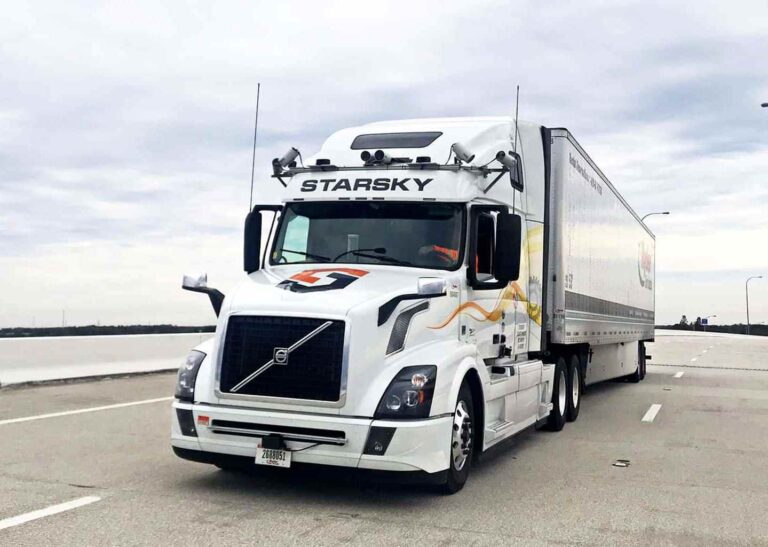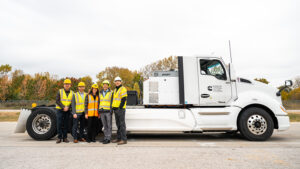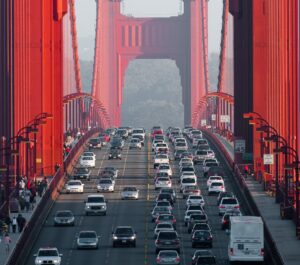In the race to develop autonomous truck technology, Starsky Robotics separated itself from the pack June 16, when the company ran one of its automated 18-wheelers on a 9.4-mile stretch of the Florida Turnpike near Orlando without a human being on board.
Instead, a safety driver sat at a console at the company’s facility in Jacksonville, watching a collection of monitors fed by the truck’s onboard cameras. The console was equipped with a small steering wheel and accelerator and brake pedals with which he could perform last-mile and other operations.
Now, whether the feat truly qualifies as “autonomous,” “self-driving” or “driverless” is a matter for the Word Police to decide and competitors to argue over. By any name, the company is chalking it up as a victory and a major step in its long-term strategy.
Founded in 2016 in San Francisco, where it is still based, by Stefan Seltz-Axmacher and Kartik Tiwari, Starsky Robotics got its operating authority in 2017. While developing driverless technology, the company is also a traditional carrier with about three dozen trucks operating throughout the Lower 48.
Meanwhile, Starsky has been conducting progressively ambitious experiments with driverless technology. According to Seltz-Axmacher, the company’s approach to driverless technology is less about replacing humans altogether but to create a system where the machines can do what they do best and humans can still do the parts of the job they do better than the machines.
In this latest test, the remote driver maneuvered the truck from its starting point at a rest stop and onto the highway. He also ordered a lane change and handled the last-mile maneuvering when it was time to exit.
This turnpike test run, conducted in normal driving conditions, is the latest in a series of progressively more ambitious experiments. In February 2018, Starsky successfully ran one of its trucks at low speed along a 7-mile stretch of closed road in Southern Florida. In May this year, they operated a truck at a sustained 55 mph on a closed portion of the Selmon Expressway near Tampa. In interviews, Seltz-Axmacher has said that 55 mph is the intended highway speed at which Starsky will run its automated trucks commercially.
Earlier in June, Florida Gov. Ron DeSantis signed a bill into law allowing commercial vehicles to operate on public roads without the presence of human drivers on board. The new law replaces a law enacted in 2012 that required a human driver on board vehicle operating on public property for any reason other than testing.
The law goes into effect July 1.
Starsky’s goal is to have 20-25 driverless trucks operating commercially in 2020, training traditional drivers to be teleoperators.
Klint Lowry has been a journalist for over 20 years. Prior to that, he did all kinds work, including several that involved driving, though he never graduated to big rigs. He worked at newspapers in the Detroit, Tampa and Little Rock, Ark., areas before coming to The Trucker in 2017. Having experienced such constant change at home and at work, he felt a certain kinship to professional truck drivers. Because trucking is more than a career, it’s a way of life, Klint has always liked to focus on every aspect of the quality of truckers’ lives.














So does this operator that’s 150 miles from that truck have a CDL and all the qualifications of a truck driver , cause to me he a driver and should anything’ happen , wreck – mechanical malfunction- stolen – all the human variables that could apply to a driver he’s going to be the fall guy , you know you are trying to make a perfect world situation in an imperfect world, if all this time- money and talent been put into recruiting and higher pay standards and better link runs there would be no need for fantasyland transportation, .PS I see you governed the truck at 55 mph that is causing a traffic hazard, remember imperfect world.